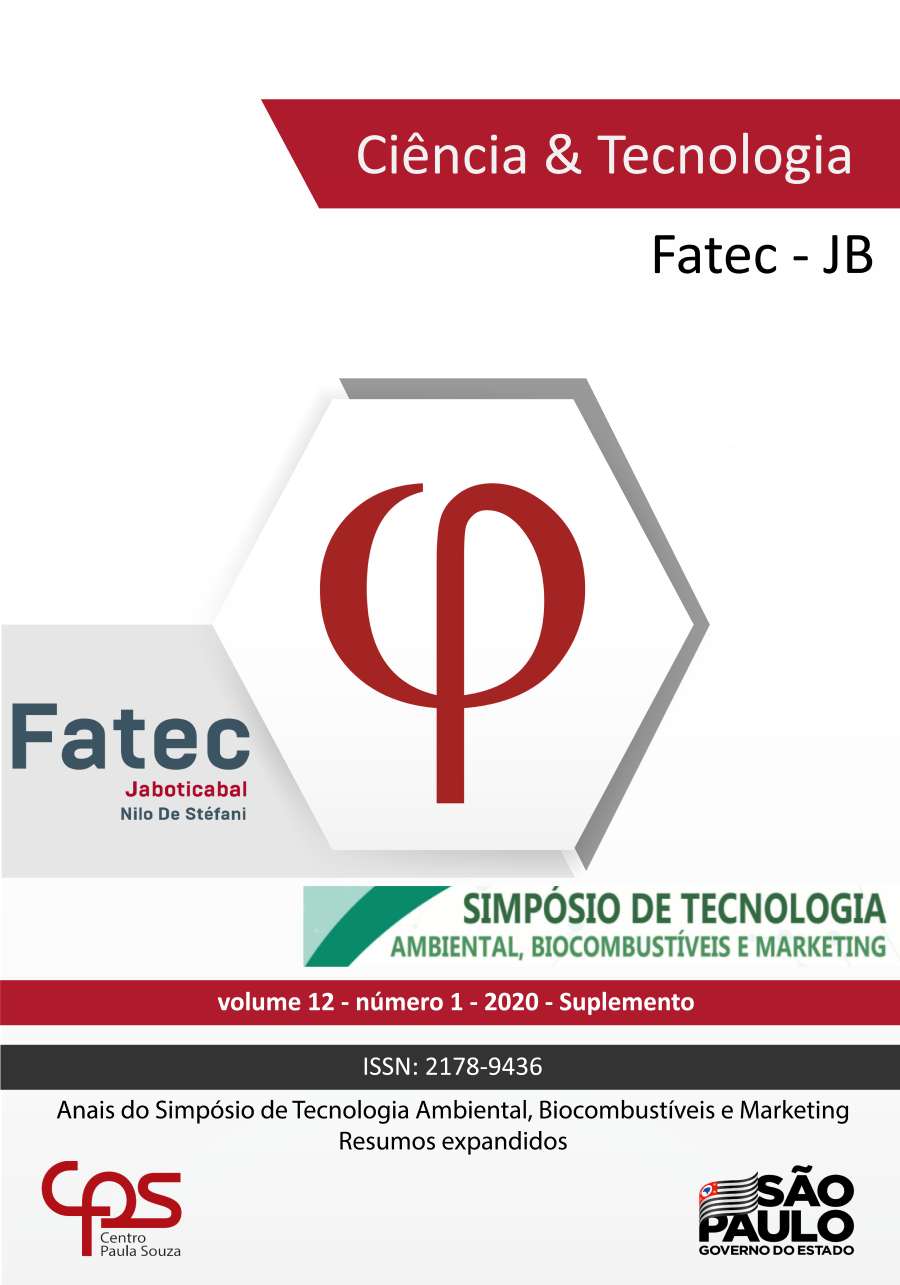AVALIAÇÃO DO CRESCIMENTO DA MICROALGA Messastrum gracile EM MEIOS DE CULTURA COMERCIAL E ALTERNATIVO UTILIZANDO MELAÇO DE CANA-DE-AÇÚCAR EM MENOR COMPRIMENTO DE LUZ
DOI:
https://doi.org/10.52138/sitec.v11i1.126Palavras-chave:
Cultivo algal, Carbono orgânico, Intensidade luminosa, Plantas aquáticas, Resíduos biológicosResumo
O cultivo de microalgas promove diversos estudos para propor melhor manejo na produção e diminuição de custos, pois a implantação desses sistemas é elevada, devido a necessidade de luz e meios de cultura de alto valor comercial. Otimizar e reduzir custos através de meios alternativos a base de plantas aquáticas (Eichhornia crassipes), fonte de carbono orgânico (melaço de cana-de-açúcar) e, também, redução do uso de energia são ferramentas essenciais para a implementação de um cultivo algal bem sucedido. Assim, o objetivo deste trabalho foi avaliar o desenvolvimento da microalga Messastrum gracile em meio comercial CHU12 em cultivo mixotrófico, utilizando melaço de cana-de-açúcar como fonte de carbono e meio alternativo de macrófita (E. crassipes), em intensidade luminosa de 30umol m-2 s-1. No meio de macrófita foi observado os maiores valores de crescimento com densidade celular máxima de 197 x105 cels mL-¹ e no meio comercial, com 95x105 cels mL-¹. A taxa específica de crescimento foi de k= 0,41 (macrófita) e k= 0,27 (CHU12), com tempo de duplicação mais rápido no meio alternativo com 2,45 dias, enquanto no meio comercial foi de 3,70 dias. Os teores de clorofila-a foram de 1,15 mgL-¹ para E. crassipes e para CHU12 averiguou-se 0,66 mgL-¹. A utilização de resíduos biológicos e subproduto da agroindústria para a produção desses microrganismos são de suma importância para diminuição dos impactos negativos nos ecossistemas.
Referências
ANDRULEVICIUTE, V.; MAKAREVICIENE, V.; SKORUPSKAITE, V; GUMBYTE, M. 2014. Biomass and oil content of Chlorella sp., Haematococcus sp., Nannochlopsis sp. and Scenedesmus sp. under mixotrophic growth conditions in the presence of technical glycerol. Journal Applied Phycology, v. 26, n. 1, p. 83-90.
CHEN, M.L.I. A cyanobacterium that contains chlorophyll f-a red-absorbing photopigment. FEBS Lett v. 586, p. 3249-3254, 2015.
CHEN, W.-H., CHU, Y.-S., LIU, J.-L., CHANG, J.-S.: Thermal degradation of carbohydrates, proteins and lipids in microalgae analyzed by evolutionary computation. - Energy Conversion and Management, vol. 160, p. 209-219, 2018.
GUARAV, K., SRIVASTAVA, R., SHARMA, J.G., SINGH, R., SINGH, V.: Molasses-based growth and lipid production by Chlorella pyrenoidosa: A potential feedstock for biodiesel. - International Journal of Green Energy, vol. 13(3), p. 320-327, 2016.
GUILLARD, R.R.L. Division rates. In: STEIN, J. R. (Ed.). Handbook of phycological methods: culture methods and growth measurements, London: Cambridge University Press, p. 289-311. 1973.
KHANRA, S.; MONDAL, M.; HALDER, G.; TIWARIC, O.N.; GAYENA, K.; BHOWMICKD, T.K.: Downstream processing of microalgae for pigments, protein and carbohydrate in industrial application: A review – ELSEVIER Food and Bioproducts Processing, vol. 110, p. 60-84, 2018.
NUSCH, E.A. Of different methods for chlorophyll and phaeopigments determination. Archiv für Hydrobiologie, v. 14, n. 1, p. 14-36, 1980.
PÉREZ-GARCIA, O.; ESCALANTE, F.M.E.; DE-BASHAN, L.E.; BASHAN Y. 2011. Heterotrophic cultures of microalgae: metabolism and potential products. Water Research, v.45, n. 1, p.11-36.
SATHASIVAM, R., RADHAKRISHNAN, R., HASHEM, A. e ABD-ALLAH, EF.: Microalgae metabolites: A rich source for food and medicine. - Saudi Journal of Biological Sciences, vol. 26, n. 4, p. 709-722, 2019.
SIPAÚBA-TAVARES, L.H., IBARRA, L.C. and FIORESI, T.B.: Ankistrodesmus gracilis (Reinsch) Korshikov (Chlorophyta) laboratory cultured in CHU12 and macrophyte with NPK media. Boletim do Instituto de Pesca, vol. 35, n. 1, p. 111-118, 2009.
SIPAÚBA-TAVARES, L.H., SEGALI, A.M.D.L., BERCHIELLI-MORAIS, F.A., SCARDOELI-TRUZZI1, B.: Development of low-cost culture media for Ankistrodesmus gracilis based on inorganic fertilizer and macrophyte. Acta Limnologica Brasiliensia, vol. 29, e5, 2017.
SIPAÚBA-TAVARES, L.H.; FLORÊNCIO, T.; SCARDOELI-TRUZZI, B.: Aquaculture biological waste as culture medium to cultivation of Ankistrodesmus gracilis (Reinsch) Korshikov. Brazilian Journal of Biology, vol.78, n. 3, p. 579 - 587, 2018.
SIPAÚBA-TAVARES, L.H.; LUSSER-SEGALI, A.M.D.; SCARDOELLI-TRUZZI B.: Aquatic Plants: Alternative Medium for Microalgae Growth. - Ann Aquac Res vol. 2(1): p. 1009, 2015.
SIPAÚBA-TAVARES, L.H.; ROCHA, O.: Produção de plâncton (fitoplâncton e zooplâncton) para alimentação de organismos aquáticos. Rima, p.106, 2001.
Downloads
Publicado
Edição
Seção
Licença
Copyright (c) 2021 Ciência & Tecnologia

Este trabalho está licenciado sob uma licença Creative Commons Attribution 4.0 International License.


